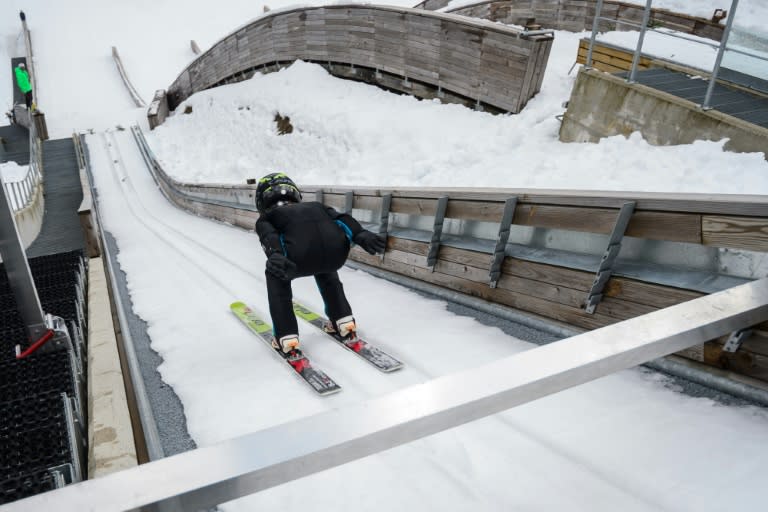In Slovenia, ski jumping's coming home
Slovenia may be small, but this nation of two million people in southeastern Europe is a giant and pioneer in one high-flying area: ski jumping. "The number one sports here are running and (ski) jumping," said Janez Gorisek, a former champion turned hill designer, who at 83 has lost none of his zeal for the sport. "Every child knows how to jump," Gorisek told AFP. And each kid's dream is to jump at Planica, Slovenia's veritable mecca of ski jumping, which this week hosts the latest round of the sport's World Cup. Tens of thousands of locals will throng this valley for the competition, while almost one in three Slovenians is expected to be glued to their televisions. The resort's illustrious history goes back to the 1930s when Slovenia was part of Yugoslavia, and when jumpers made their first tentative jumps through the Alpine air. But since then, as the technology has matured, Planica has seen record after record broken. It was here in 1936 that Austrian Sepp Bradl made the first jump of over 100 metres (330 feet). In 1994, soon after Slovenia had become independent, Toni Nieminen of Finland managed 200 metres. Nieminen's feat was achieved on the Letalnica Bratov Gorisek, one of the biggest ski jumping hills in the world, named after Janez Gorisek and his late brother Lado. Continuously updated, this monster allows daredevil competitors to soar more than 250 metres, so far that this is part of a separate discipline called "ski flying". "When I took over (at Planica) the limit for jumps was at 150 metres. I said, let's go for 200. When we reached 200, I said let's go for 250," Gorisek says with a smile, his "baby" behind him. "Now I'm saying, let's go for 300!". - Self-sufficient - The design skills employed at Planica have also been incorporated in jumping hills all over Europe, including at Vikersund in Norway, Oberstdorf in Germany and Kulm next door in Austria. But with its more than 70 registered jumping hills nationwide, Slovenia is not just a big player in places to jump, it also makes top-notch equipment. "Slovenia is in fact completely self-sufficient (in ski jumping) and has a big advantage over the rest of the world," Peter Slatnar, owner of ski maker Slatnar, told AFP. Last year he took over and rebranded the ski jumping activities of Elan, a major international player in winter gear, founded by partisans fighting the Nazis in World War II. - Local talent - And Slovenia also produces many of the stars of the sector. Peter Prevc, 24, is one such local hero, winning the 2016 Ski Jumping World Cup and being runner-up in 2015 and 2014. He was the first person to jump 250 metres -- at Planica of course. This season has proved dreadful for Prevc. But other Slovenians, not least his 17-year-old brother Domen, have stepped in. "You do not get a Peter Prevc every day or every year, he is a unique talent," Saso Komovec, head of sports at the France Preseren high school in Kranj where Prevc was a pupil, said. "But despite that, new talents follow in his footsteps and every year new names emerge." For the past 13 years Komovec's school between Planica and Ljubljana has brought in talented young ski jumpers from around the country to hone their skills at a nearby hill. "They can attend school... while enjoying ideal conditions for training. This way they do not have to give up their sports career," Komovec added. Ninety percent of the national team are former pupils. Another is 19-year-old Ziga Jelar, a member of the Slovenian junior team that won a gold medal at February's Nordic Junior World Ski Championship in Park City in the US. Jelar started jumping when he was five. "It was a game for me, I jumped at home, in the garden. I believe what attracted me to this sport were its fundamental elements: adrenaline, speed and height. "It's simply the joy of flying through the air." Of the 45 pupils taking special training, just five are girls. But this is set for a "big increase" in the coming years, trainer Gorazd Pogorelcnik told AFP.





